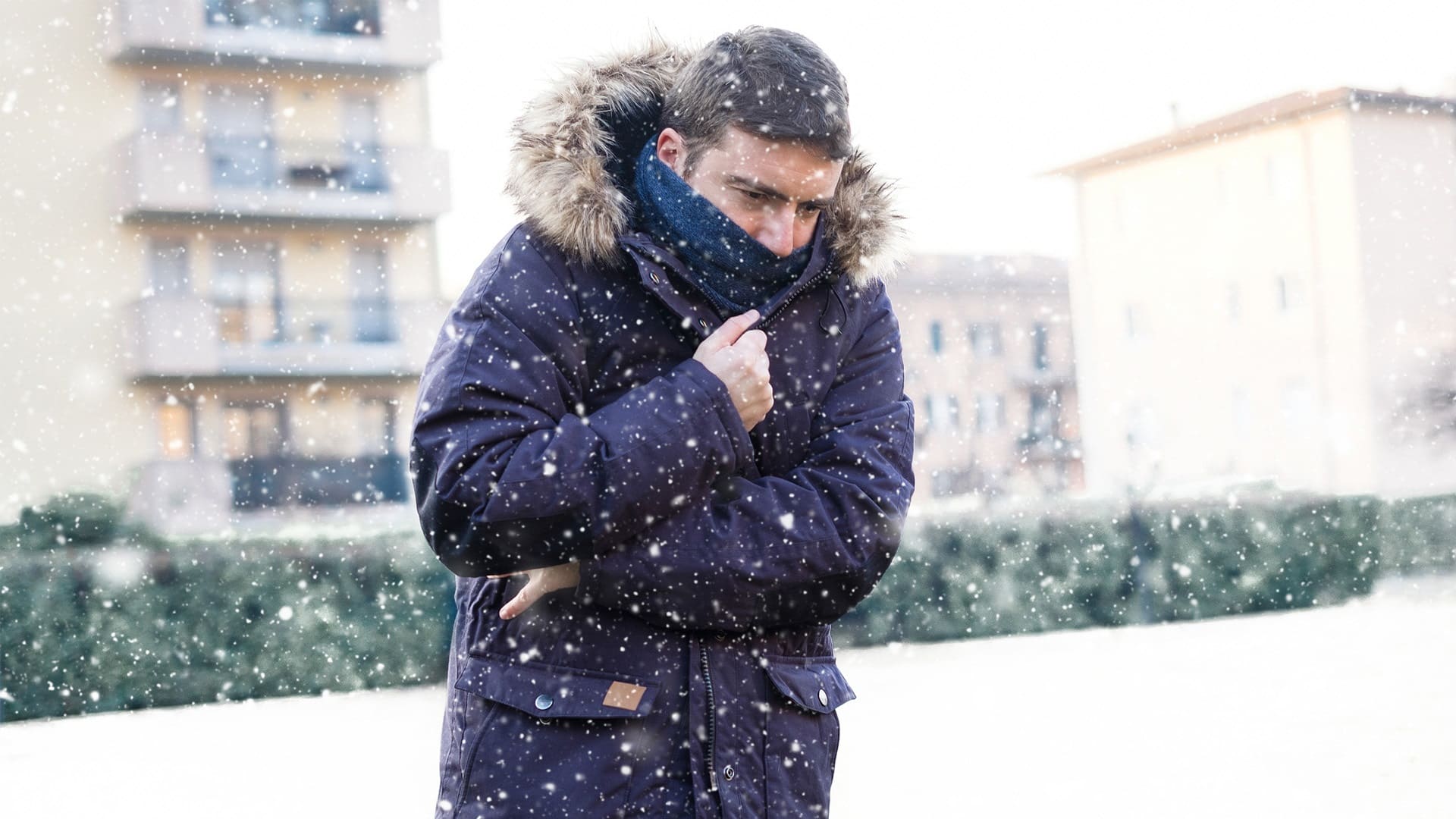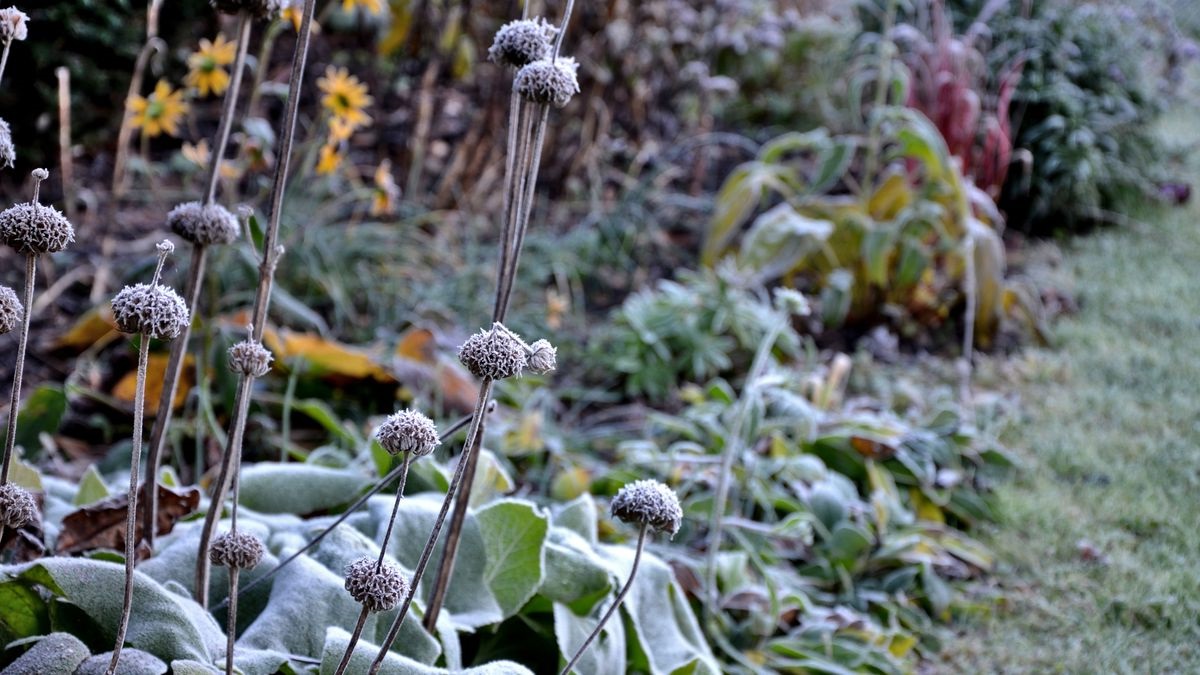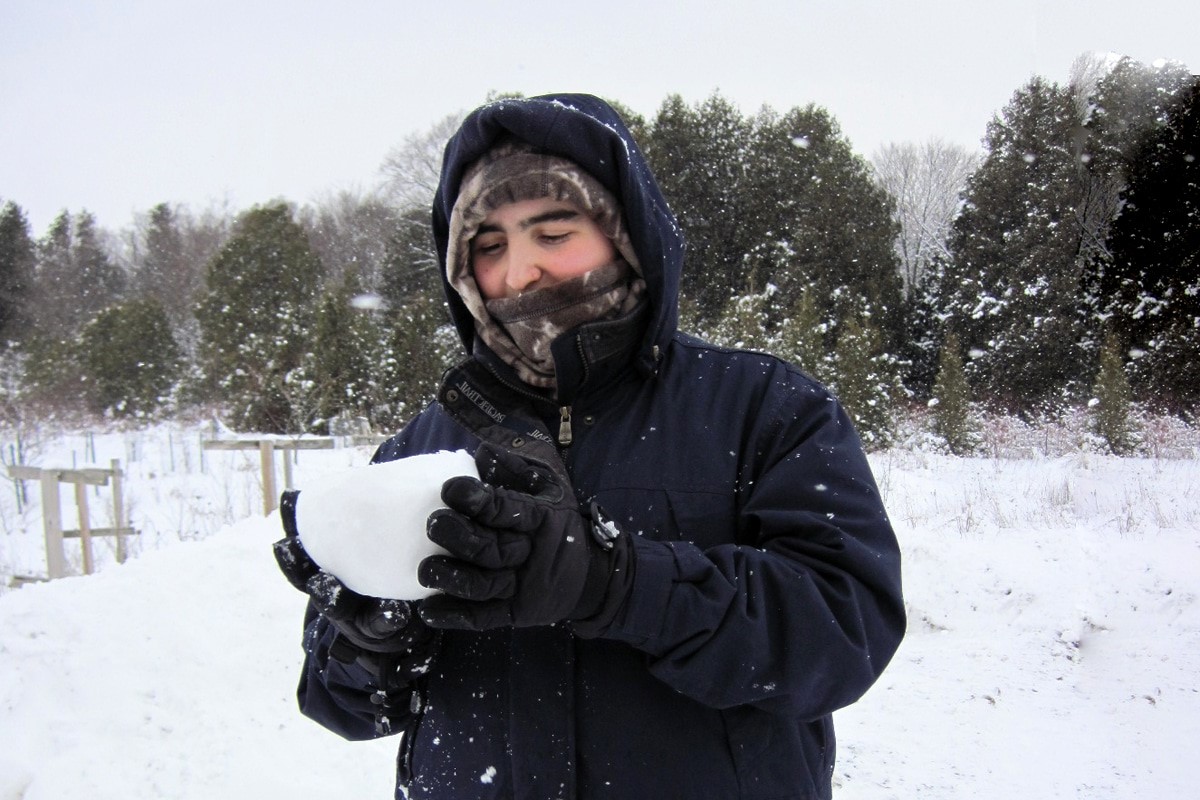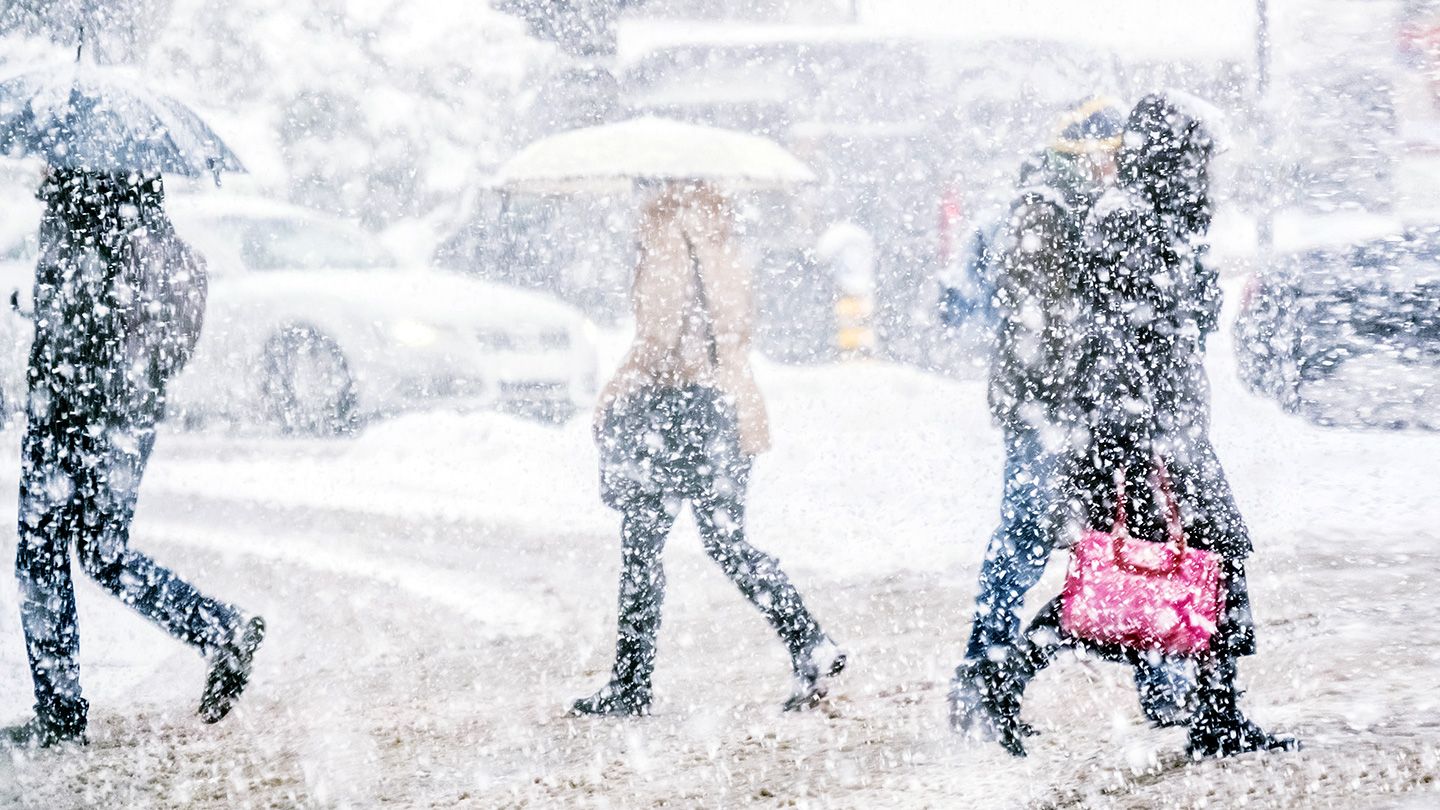Home>Weather and Climate>Tips For Pouring Concrete In Cold Weather


Weather and Climate
Tips For Pouring Concrete In Cold Weather
Modified: April 28, 2024
Learn how to pour concrete in cold weather with our expert tips. Understand the impact of weather and climate on your concrete project for best results.
(Many of the links in this article redirect to a specific reviewed product. Your purchase of these products through affiliate links helps to generate commission for Temperatures.com, at no extra cost. Learn more)
Table of Contents
Importance of Temperature Consideration
When it comes to pouring concrete in cold weather, temperature consideration is paramount. The ambient temperature and the temperature of the concrete itself play a crucial role in the success of the pouring process. Cold weather significantly impacts the behavior and curing of concrete, making it essential to take proactive measures to ensure a successful outcome.
The temperature of the concrete mix is a critical factor that directly influences its setting time and strength development. In cold weather, the hydration process of concrete slows down, potentially leading to delayed setting and inadequate strength gain. This can result in a range of issues, including surface scaling, cracking, and reduced durability of the concrete structure.
Furthermore, the ambient temperature at the time of pouring and during the initial curing stages can have a profound impact on the overall quality of the concrete. Low temperatures can impede the hydration process, leading to insufficient strength development and increased vulnerability to damage from freeze-thaw cycles.
It's important to note that the ideal temperature range for pouring concrete is typically between 50°F and 85°F (10°C to 30°C). When the mercury drops below this range, special precautions and techniques must be employed to mitigate the adverse effects of cold weather on the concrete.
In colder climates, where temperatures frequently dip below the optimal range, it's crucial to implement strategies to maintain the appropriate temperature throughout the pouring and curing phases. Failing to account for temperature considerations can result in costly rework, structural deficiencies, and compromised longevity of the concrete.
By prioritizing temperature consideration and implementing appropriate measures, such as selecting the right concrete mix, preparing the site, and utilizing insulation and heating devices, contractors and construction professionals can effectively navigate the challenges posed by cold weather conditions and ensure the successful pouring and curing of concrete structures.
Choosing the Right Concrete Mix
Selecting the appropriate concrete mix is a critical aspect of cold weather pouring. The composition of the concrete directly impacts its ability to withstand the challenges posed by low temperatures and ensures optimal performance during the curing process. When facing cold weather conditions, it's essential to choose a concrete mix specifically designed to address the unique challenges associated with lower temperatures.
One of the key considerations when selecting a concrete mix for cold weather pouring is the inclusion of specialized admixtures. These additives are formulated to enhance the properties of the concrete, making it more resilient to the effects of cold weather. Admixtures such as accelerators are commonly used to expedite the setting time of the concrete, allowing for efficient curing even in low temperatures. By incorporating accelerators into the mix, contractors can mitigate the risk of delayed setting and ensure that the concrete achieves the necessary strength within an appropriate timeframe.
In addition to accelerators, air-entraining admixtures are often included in cold weather concrete mixes. These additives create microscopic air bubbles within the concrete, improving its resistance to freeze-thaw cycles. In cold weather conditions, the presence of these air voids can prevent the formation of damaging internal pressure within the concrete, reducing the likelihood of cracking and deterioration due to freezing and thawing cycles.
Furthermore, the selection of cementitious materials and aggregates is crucial in formulating a cold weather concrete mix. High-early-strength cement, which exhibits accelerated strength development, is often preferred for cold weather applications. This type of cement enables the concrete to achieve sufficient strength in a shorter timeframe, reducing the risk of damage from freezing temperatures during the early stages of curing.
Moreover, the use of well-graded aggregates with proper particle size distribution is essential for optimizing the workability and strength of the concrete mix in cold weather. The combination of coarse and fine aggregates in the correct proportions contributes to the overall durability and performance of the concrete, especially when exposed to challenging environmental conditions.
By carefully selecting a concrete mix tailored to cold weather requirements, construction professionals can proactively address the potential challenges associated with low temperatures. The strategic incorporation of specialized admixtures, appropriate cementitious materials, and well-graded aggregates empowers contractors to pour and cure concrete effectively, ensuring the long-term integrity and resilience of the resulting structures.
Preparing the Site for Cold Weather Pouring
Preparing the site for cold weather pouring is a crucial step that sets the foundation for a successful concrete placement process. In cold weather conditions, the site preparation becomes even more critical to ensure that the concrete can be poured and cured effectively despite the challenging environmental factors.
The first step in preparing the site for cold weather pouring involves thorough site inspection and assessment. It is essential to evaluate the existing conditions, including the ambient temperature, ground temperature, and potential exposure to wind and precipitation. Understanding these factors allows construction professionals to develop a comprehensive plan to mitigate the impact of cold weather on the concrete pouring and curing process.
One of the key considerations during site preparation is the implementation of measures to protect the subgrade and formwork from the adverse effects of cold temperatures. This may involve insulating the subgrade to prevent frost penetration and ensuring that the formwork is adequately protected from freezing conditions. Additionally, the use of ground heating systems or temporary enclosures can help maintain the necessary temperature levels at the site, facilitating optimal conditions for concrete placement.
Furthermore, it is essential to address any existing moisture on the site, as excessive moisture can compromise the integrity of the concrete and impede the curing process. Proper drainage and moisture management strategies should be employed to prevent the accumulation of water, especially in areas where the concrete will be poured. By ensuring adequate moisture control, construction professionals can minimize the risk of freeze-thaw damage and promote the proper curing of the concrete.
In addition to addressing temperature and moisture concerns, site preparation for cold weather pouring also involves coordinating the logistics of concrete delivery and placement. This includes scheduling the pour to minimize exposure to the coldest parts of the day, ensuring that the necessary equipment and materials are readily available, and coordinating the efforts of the construction team to optimize efficiency and productivity.
By meticulously preparing the site for cold weather pouring, construction professionals can proactively address the challenges posed by low temperatures and create an environment conducive to successful concrete placement and curing. Through strategic planning, insulation, moisture management, and logistical coordination, the site can be transformed into a controlled environment that facilitates the effective pouring and curing of concrete, ultimately contributing to the long-term durability and performance of the resulting structures.
Using Insulating Blankets and Heating Devices
In cold weather conditions, the use of insulating blankets and heating devices is instrumental in creating a controlled environment that promotes the proper curing of concrete. These specialized tools and materials serve as essential components in mitigating the adverse effects of low temperatures on freshly poured concrete, ensuring that the curing process proceeds effectively despite the challenging environmental conditions.
Insulating blankets, also known as concrete curing blankets, are designed to provide thermal insulation and protection for newly placed concrete. These blankets are typically constructed from durable, weather-resistant materials and are capable of retaining heat generated by the concrete's hydration process. By covering the freshly poured concrete with insulating blankets, construction professionals can shield the concrete from the impact of cold temperatures, preserving the necessary heat for optimal curing.
Furthermore, insulating blankets act as a barrier against external elements such as wind and precipitation, safeguarding the concrete from potential damage caused by exposure to harsh weather conditions. This protective layer helps maintain a consistent temperature around the concrete, preventing rapid heat loss and ensuring that the hydration process proceeds uninterrupted, ultimately contributing to the development of strong and durable concrete structures.
In addition to insulating blankets, the use of heating devices, such as electric or propane-powered heaters, can further bolster the temperature management efforts during cold weather concrete pouring. These heating devices are strategically positioned around the concrete placement site to provide supplemental heat, counteracting the effects of low ambient temperatures and promoting the optimal curing of the concrete.
Electric heating blankets, radiant heaters, and forced-air heaters are among the commonly utilized heating devices in cold weather concrete construction. These tools are designed to deliver controlled heat to the concrete and its surrounding environment, preventing temperature fluctuations that could compromise the curing process. By strategically deploying heating devices in conjunction with insulating blankets, construction professionals can create a conducive environment that supports the gradual and uniform development of concrete strength, even in the face of challenging cold weather conditions.
The combined use of insulating blankets and heating devices represents a proactive approach to managing temperature during cold weather concrete pouring. By leveraging these tools, construction professionals can effectively mitigate the adverse effects of low temperatures, safeguard the integrity of the concrete, and ensure the successful curing of structures that exhibit the necessary strength, durability, and resilience to withstand the rigors of their intended applications.
Monitoring and Protecting the Concrete During Curing
Monitoring and protecting the concrete during the curing process is a critical phase that demands meticulous attention to detail and proactive measures to ensure the optimal development of strength and durability. In cold weather conditions, the challenges associated with curing are amplified, making it essential to implement robust strategies for monitoring and protecting the concrete as it undergoes the crucial curing phase.
One of the primary aspects of monitoring the concrete during curing involves regular temperature checks. It is imperative to monitor the internal temperature of the concrete to ensure that it remains within the recommended range for effective curing. This can be achieved through the use of embedded temperature sensors or thermal imaging technology, allowing construction professionals to track the temperature profile of the concrete and identify any deviations that may hinder the curing process. By closely monitoring the temperature, adjustments can be made to the insulation and heating systems to maintain the ideal curing conditions, thereby promoting the uniform development of concrete strength.
In addition to temperature monitoring, protecting the concrete during curing involves safeguarding it from rapid temperature fluctuations. Sudden changes in temperature, especially in cold weather, can compromise the integrity of the curing concrete, leading to issues such as thermal cracking and reduced strength. To mitigate this risk, it is essential to maintain a stable and controlled environment around the concrete. This may involve adjusting the insulation blankets and heating devices to minimize temperature variations and shield the concrete from the impact of external temperature fluctuations.
Furthermore, protecting the concrete during curing encompasses measures to prevent premature drying and moisture loss. In cold weather conditions, the risk of rapid evaporation and moisture depletion is heightened, potentially impeding the hydration process and compromising the quality of the concrete. To counteract this, moisture-retaining techniques such as applying curing compounds or using moisture barriers can be employed to ensure that the concrete retains the necessary moisture for optimal curing. By protecting the concrete from premature drying, construction professionals can facilitate the complete hydration of the cementitious materials, promoting the development of strong and durable concrete structures.
Moreover, continuous observation and assessment of the concrete's surface conditions are essential during the curing process. Any signs of distress, such as cracking or surface scaling, should be promptly addressed to prevent further damage and ensure the integrity of the cured concrete. This proactive approach to monitoring and protecting the concrete enables construction professionals to identify potential issues early and implement remedial actions to preserve the quality and performance of the cured structures.
By prioritizing the meticulous monitoring and protection of the concrete during curing, construction professionals can effectively navigate the challenges posed by cold weather conditions and ensure the successful development of durable and resilient concrete structures. Through vigilant temperature monitoring, environmental control, moisture management, and proactive surface inspection, the curing process can be managed with precision, ultimately yielding concrete structures that exhibit the necessary strength, durability, and longevity to meet the demands of their intended applications.
Safety Precautions for Cold Weather Pouring
Ensuring the safety of personnel and maintaining a secure working environment is paramount during cold weather concrete pouring. The unique challenges presented by low temperatures necessitate the implementation of specific safety precautions to mitigate potential hazards and safeguard the well-being of the construction team.
-
Personal Protective Equipment (PPE): In cold weather conditions, it is crucial for workers to utilize appropriate personal protective equipment to combat the adverse effects of low temperatures. This includes insulated clothing, gloves, and headgear to minimize the risk of cold-related injuries and maintain thermal comfort while working on-site.
-
Slip and Fall Prevention: Cold weather often brings icy and slippery conditions, increasing the likelihood of slip and fall accidents. Employing anti-slip footwear and ensuring the de-icing of walkways and working areas are essential measures to prevent injuries resulting from slips and falls.
-
Cold Stress Management: Exposure to cold temperatures can pose significant health risks, including hypothermia and frostbite. Implementing regular breaks in heated areas, providing warm beverages, and monitoring workers for signs of cold stress are vital in safeguarding their well-being.
-
Equipment Safety Checks: Cold weather can impact the performance of construction equipment and machinery. Conducting thorough safety checks on all equipment, particularly those utilizing heating devices, is essential to prevent malfunctions and potential hazards during concrete pouring.
-
Proper Lighting: With reduced daylight hours in colder seasons, adequate lighting is crucial for maintaining visibility and ensuring a safe working environment. Illuminating the work areas and access points with sufficient lighting helps prevent accidents and enhances overall safety.
-
Fire Safety Measures: The use of heating devices and electrical equipment in cold weather construction necessitates strict adherence to fire safety protocols. Ensuring the availability of fire extinguishers, proper storage of flammable materials, and regular inspection of heating devices are critical for fire prevention.
-
Communication and Emergency Protocols: Establishing clear communication channels and emergency protocols is essential to address any unforeseen challenges or incidents that may arise during cold weather concrete pouring. All team members should be familiar with emergency procedures and communication protocols to facilitate a prompt and coordinated response to any potential safety issues.
By prioritizing these safety precautions, construction professionals can create a secure and conducive working environment for cold weather concrete pouring, mitigating potential hazards and ensuring the well-being of the construction team. Through proactive safety measures, the risks associated with cold weather conditions can be effectively managed, allowing for the successful completion of concrete pouring projects while upholding the highest standards of safety and well-being for all personnel involved.














